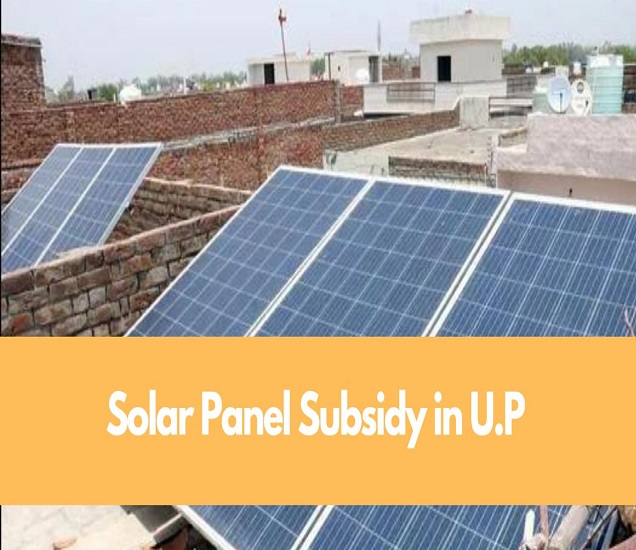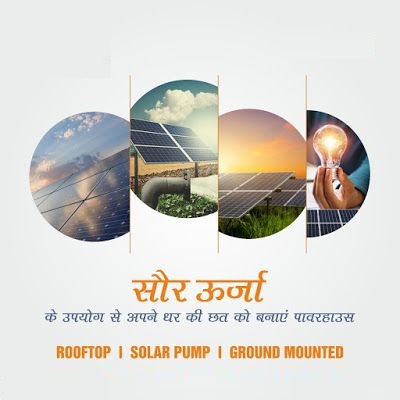

Households have the opportunity to reduce solar panel system prices in Uttar Pradesh and free the cost of electricity for their home. Under the Rooftop Solar Programme Phase II scheme, you can receive Central Financial Assistance (CFA)/Solar Subsidy Support of a fixed amount for every kW of your system size. Only residential consumers and housing societies are eligible to benefit under this scheme.
Note: The approval on a CFA/subsidy application is granted only after the successful inspection and commissioning of your installed RTS plant, which involves the integration of the net metering mechanism. The CFA/subsidy amount is calculated according to the total solar system capacity approved.
| Rooftop Solar System Capacity | Applicable Subsidy (₹) |
| Up to 3 kW | 18,000/kW |
| Above 3 kW and up to 10 kW | 9,000/kW* |
| Above 10 kW | 1,17,000** |
| Resident Welfare Associations (RWA) / Group Housing Societies (GHS) |
Rs. 9,000/- per kW
For common facilities up to 500 kWp @ 10 kWp per house, with the upper limit being inclusive of individual rooftop plants already installed by individual residents in that GHS/RWA at the time of installation of RTS for common activity. |
|
Note: *₹18,000/kW for the first 3 kW and ₹9,000/kW for the rest of the capacity up to 10 kW.
**The subsidy amount is fixed for rooftop solar systems above 10 kW capacity. |
|
Here is a tabular representation of 1kW-10kW solar panel prices in Uttar Pradesh with subsidy. Under the simplified subsidy scheme, a fixed subsidy amount is awarded for each kW of the total solar system capacity. The subsidy slabs defined below and the respective subsidy aid for different system capacities are applicable for all residential installations across in Uttar Pradesh.
The recently introduced subsidy rates under the national simplified subsidy scheme offer a fixed subsidy amount for each kW of solar system capacity. These subsidy slabs is applicable for all residential installations of solar power plants in UP only.
| Solar System Capacity |
Subsidy-Central Govt(Rs) |
Subsidy-State Govt(UP)(Rs) |
Total Subsidy Amount(Rs) |
Total system cost(approx) (Rs) |
Prices After Subsidy |
| 1kW | Rs. 30,000 & | Rs. 15,000 | Rs. 45,000 | Rs. 65,000 | Rs. 20,000 |
| 2kW | Rs. 60,000 & | Rs. 30,000 | Rs. 90,000 | Rs. 1,35,000 | Rs. 40,000 |
| 3kW | Rs. 78,000 & | Rs. 30,000 | Rs. 1,08,000 | Rs. 1,80,000 | Rs. 72,000 |
| 4kW | Rs. 78,000 & | Rs. 30,000 | Rs. 1,08,000 | Rs. 2,40,000 | Rs. 1,32,000 |
| 5kW | Rs. 78,000 & | Rs. 30,000 | Rs. 1,08,000 | Rs. 2,75,000 | Rs. 1,67,000 |
| 6kW | Rs. 78,000 & | Rs. 30,000 | Rs. 1,08,000 | Rs. 3,30,000 | Rs. 2,22,000 |
| 7kW | Rs. 78,000 & | Rs. 30,000 | Rs. 1,08,000 | Rs. 3,85,000 | Rs. 2,77,000 |
| 8kW | Rs. 78,000 & | Rs. 30,000 | Rs. 1,08,000 | Rs. 4,00,000 | Rs. 2,92,000 |
| 9kW | Rs. 78,000 & | Rs. 30,000 | Rs. 1,08,000 | Rs. 4,50,000 | Rs. 3,42,000 |
| 10kW | Rs. 78,000 & | Rs. 30,000 | Rs. 1,08,000 | Rs. 5,00,000 | Rs. 3,92,000 |
Note : For places outside UP, state Govt subsidy amount may vary. Subsidy amount to be transferred directly to Customer Bank acccount by respective agencies after INSTALLATION & other formalities.
Net metering is a mechanism of recording import and export of units. Tying your solar power plant in UP to the government grid allows you to earn solar credits by sending unused solar energy units to the grid. On some days when your region doesn’t receive enough sunshine due to inclement weather, the solar panels produce less power than the standard output. In this case, you can also fall back to the grid and meet your additional power requirements.
The net meter is paired with your solar panels to record this flow of energy between the grid and your home. It records both the import of grid electricity and the export of solar electricity in your monthly utility bill, and you’ll be required to settle the difference.

Broadly, the process for installing a net meter is the same across all states in India. When applying for solar panel subsidy in Uttar Pradesh, the process will involve the commissioning of your system which requires setting up a net metering mechanism to regulate your home solar system.
More and more households are recognizing the financial, economical, and environmental advantages of switching to solar. And given the impetus of the solar subsidy scheme, installing a solar system with subsidy in UP can now fit any home with any budget.
However, it’s important to note that government subsidies are only available until the country’s target of 40GW of rooftop solar (RTS) installations is achieved. The world is moving to renewable alternatives to facilitate sustainable growth and development. Therefore, now is the right time to tap into the power of solar PV technology for your home.
A 3kW solar system is a suitable size to power small homes and commercial spaces. Most property owners on a budget prefer this system size to reduce their electricity costs without compromising on their energy needs. If you opt for a grid-connected solar framework and select made-in-India solar components, you will be able to receive a maximum subsidy of Rs. 43,764.
To be eligible under the subsidy scheme, it’s mandatory to only hire an empanelled vendor who is vetted and authorized to work on subsidized residential solar projects. They uphold the required minimum specifications and standards in RTS installations. It’s advised to go for a solar company registered with your local Distribution Utility (DISCOM) company.
The vendor must conduct an initial site survey of the location where you intend to set up your solar power plant in UP. During the survey, your site is evaluated on the technical and financial parameters, which determine the right type, size, and design of your home solar plant.
It’s the vendor’s duty to carry out the entire installation process, including permit acquisitions. Also, the vendor is required to help the DISCOM authority in setting up the net meter and inspecting the installed solar plant. Post installation, your vendor provides ongoing maintenance on your plant for the next five years.
Although it largely depends on the number of solar panels used and the module mounting structure opted for, a typical 1kW RTS plant composed of standard-quality panels will occupy 10 sq. metres. The area must be clear of any shadow cast by nearby trees and structures to ensure that solar panels perform at their peak efficiency level.
